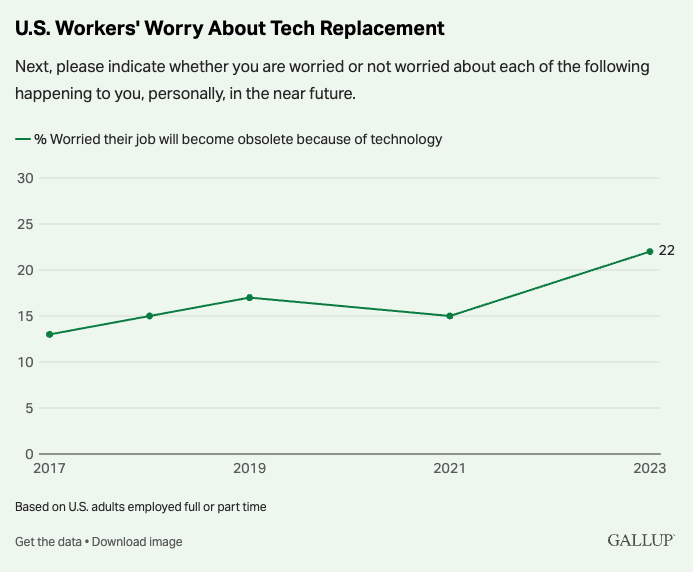You'll get deep dive essays, curated headlines, and plug-and-play methods for working with AI.
AI Adoption Without Results? Most Companies Miss This Critical Factor
|
Last month, a Danish research team dropped a surprising finding: 40% of employees across a variety of roles are using Gen AI chatbots weekly and saying that it saves them time, but company-wide productivity, in terms of hours worked or wages earned, hasn’t budged. Why would individuals see benefits from AI adoption, but not companies? An important part of managing change in any company, especially when adopting innovations like AI, is to start with an understanding of the readiness for change. Readiness overcomes resistance and sets individual behaviors in the right direction. Understanding and managing their AI readiness is the factor that most companies miss. Whether because of ignorance, assumptions, or technical definitions, companies need to measure and develop their workforce's human-AI readiness. As we discussed last time, human-AI readiness refers to your people’s mental and emotional buy-in to AI-related changes and is an important prerequisite for successful adoption. Strong buy-in to change precipitates AI…
In this essay, we’ll talk about ways to measure human-AI readiness, including specific questions you can ask your team today, and why measurement makes you more ready to purposefully adopt AI. How to know if your people are AI-readyReadiness helps companies reach the “starting line” in terms of AI training, procurement, and implementation decisions. But to make decisions about what tools to invest in, where there are potential champions and blockers, and how big or small you can start with, you need good readiness measurement. How should we measure readiness (and how does this help us be more AI-ready)? Here are three tips. Tip #1: Go beyond personal readiness—look at the team.Each employee has their personal human-AI readiness as a starting point. Whether someone is naturally resistant to or motivated by technology, as well as their levels of AI awareness and literacy, drives personal AI readiness. But systematic, group-level AI adoption is where you’ll see the value, and it comes with its readiness drivers. To get started, ask your team this question:
How measuring team-level drivers helps manage and increase readiness:
Tip #2: Go beyond technical AI readiness—remember the human elements.Most companies think that if they have the technical readiness to deploy an AI tool, the latest tools, strong security, and good data, they must be set. But we know that the readiness behind purposeful usage involves more than employees logging in to an app. It involves the thoughts, perceptions, attitudes, and emotions of people using the tech. For instance, fears of job replacement due to AI have been steadily on the rise over the past few years (see below), and drive whether folks will be more skeptical or hesitant to try a new tool.
To get started, ask your team this question:
How measuring the human elements helps manage and increase readiness:
Tip #3: Go beyond one-and-done measures—conduct regular checks.Rather than a one-time event, AI readiness and adoption act as partners in an ongoing dance; readiness enables adoption, while adoption experiences shape future readiness as market conditions and business needs evolve. This cyclical relationship means organizations should check their readiness at key inflection points in the adoption curve, not just once at the beginning. To get started, ask your team this question (periodically):
How ongoing measurement helps manage and increase readiness:
By measuring human-AI readiness beyond just how individuals use AI, looking at how teams work together, addressing what people are worried about, and checking in regularly, you can turn all those random AI experiments happening around your company into something more coordinated. This is precisely the critical step most companies miss. They track individual tool usage but neglect to measure and manage the broader human and team readiness factors that enable systematic adoption. That's how you'll finally see those productivity gains everyone's been promised but few are getting. PS — If you want help quantifying your human-AI readiness, we have a practical next step for you.At Workplace Labs, we offer both short and long-form human-AI readiness assessments. We combine individual and group-level psychological and emotional drivers of AI adoption into a survey you can easily deliver to your teams periodically. The results give you insights into how AI champions, leaders, or your company at large are resistant or motivated towards using AI and how your organization supports them. Email us at info@workplacelabs.io for more information. |
Go from overwhelmed to in-demand AI Strategist (without hours of research)
You'll get deep dive essays, curated headlines, and plug-and-play methods for working with AI.
